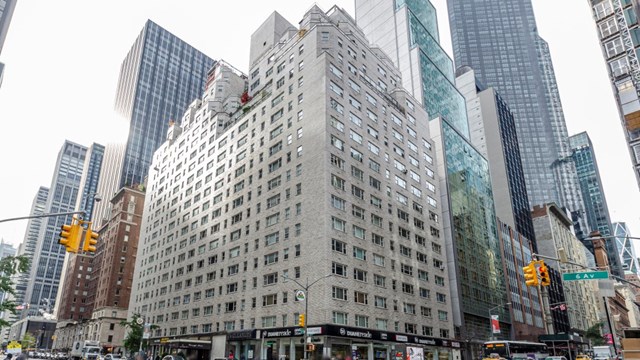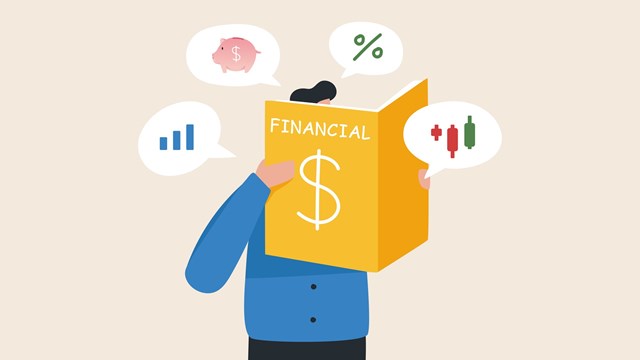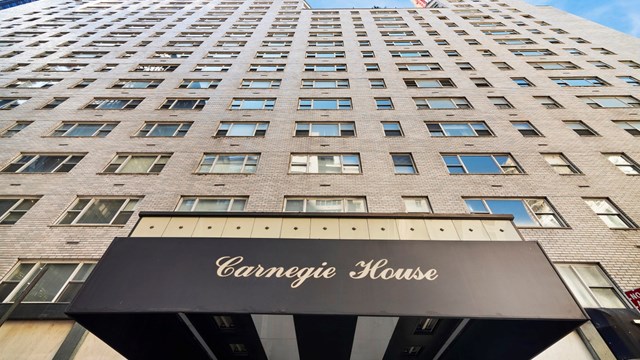In most cities, traditionally, the choicest pieces of real estate are owned by native sons and daughters, people who are from the area. Money comes in from everywhere, but the entrepreneurs making that money are homegrown. Heinz and Carnegie in Pittsburgh, Ford in Detroit, and more recently, Bill Gates in Seattle.
New York City is not necessarily like that. New York produces wealthy citizens, true—but even more, it lures them here. Manhattan is an urban flame, drawing high-net-worth moths from all over the world. The rich, the successful, the powerful, gravitate towards New York because, simply, it is the economic and cultural capital of the United States—which makes it, some might argue, the economic and cultural capital of the world.
Because of its cachet, New York is not easily roiled by fluctuations in the financial markets that can grip the rest of the country. Yes, there are downturns in the real estate market. Harlem’s black population was established because an economic crisis, combined with the building of Penn Station in the district formerly known as the Tenderloin, afforded African-Americans both the opportunity and the capital to buy vacant apartments. The late 1980s saw another dip in the prices of apartments. But overall, a two-bedroom apartment on Central Park West is just as sound an investment as blue chip stock—and unlike stock, is not merely conceptual.
In cities like Pittsburgh, Cleveland, Phoenix, Miami and Dallas, recession means fewer buyers. In New York, it means a weak dollar, opening the door for foreign investors uninterested in other, less glamorous cities. Indeed, foreign investment in New York is on the rise. According to a survey conducted by the Association of Foreign Investors in Real Estate (AFIRE) earlier this year that tracked the buying preferences of its members, foreign investors account for $230 billion worth of property in the U.S. alone. In terms of investment ranking by the survey for the top 5 U.S. cities, New York City held the top score of 98, with Washington, D.C. coming a not-so-close second at a ranking of 80, and Los Angeles coming in a distant third with a score of 26. Among international capitals, New York also ranked first over the likes of London and Paris.
Why Here, Why Now?
According to AnneMarie Alexander, director of sales and marketing for HJ Development, LLC, in Manhattan, Europeans are buying up Manhattan real estate, largely because it is “on sale.” With a weak dollar and a strong Euro, they can get their own piece of Manhattan for about “50 percent off.” Alexander’s company, which has developed 211 East 51st Street—a converted building of 73 luxury condos—has seen quite a few European buyers, particularly from France, Italy, and Spain. In general, these European buyers are drawn to new developments, in part due to the stringent financial examinations of existing co-op or condo boards. A “no finance contingency” insures for the seller (the developer) that if the foreign buyer cannot get a loan, he/she must come up with the cash or lose the 10 percent downpayment on the property.
According to Rohan Marwaha, managing director of Cityscape, an investment concern focusing on facilitating foreign investment in U.S. market, there are several factors that contribute to a spike a foreign investor’s interest in the New York City market. “The exchange rate between a foreign country and the U.S. will play a major part,” says Marwaha. “Some economists feel the dollar is currently undervalued by as much as 15 percent, which for an overseas investor provides an excellent incentive.”
The emergence of a wealthy middle class within a foreign country is also likely to be a contributing factor, Marwaha continues. “China, India, Russia and many other countries have seen their middle class expand considerably over the last few years,” he says. “More disposable income quite simply means more investment, some of which will undoubtedly go overseas.”
Deregulation by a foreign country’s government can also play a part in that country’s entry into the U.S. real estate market. “Recently the Indian government introduced a law allowing nationals to invest up to $200,000 per person into foreign markets,” says Marwaha. “Previously nationals were not legally permitted to invest anything overseas. Given that India now has more dollar millionaires than the whole of Europe, I would say this is something that could spike interest.”
Finally, says Marwaha, “The cost of borrowing is another major factor. U.S. interest rates are still quite low and should provide further incentive for foreign investors.”
Whether the buyers are Middle Eastern, Russian, Spanish, Irish, or Chinese, and whether they are purchasing apartments as second homes or investment properties, there is no doubt that the influx of foreign buyers has contributed to a real estate market that remains, unlike the rest of the country, robust.
Weak Dollar, Strong Market
To invest in New York City real estate, you need money, and lots of it. With oil prices at an all-time high and no end in sight, nationals from oil producing nations are spilling into the city: Russians and Arabs, Dutch and English. The Chinese have the capital to invest, as do Indians and Irish, thanks to the burgeoning tech market. That said, there is no specific trend—the people with the most money come to New York, regardless of their native land.
“It’s across the board,” says Carol E. Levy, broker and owner of the eponymous Carol E. Levy Real Estate. “French, Italians, Hungarians, Brazilians—from all over.”
Dolly Lenz, vice chairman of Prudential Douglas Elliman and perennial leader in high-end sales, notes the cities where sales are made: “Hong Kong, Singapore, Beijing, London. London winds up being a catch-all. Everybody’s there from Asia, from the Middle East. London captures everyone; Hong Kong captures everyone.”
China is also a player, Lenz says, noting that the upcoming Olympics in Beijing has had a positive effect on Chinese investment in New York.
Three main factors contribute to the rise in foreign investment: the weak dollar, the relative stability of the market, and the relative ease of buying in the United States.
“Anybody with money sees the opportunity of the weak dollar,” says Levy. “Foreign buyers in particular have been coming out of the woodwork. They all want a piece of the Big Apple, particularly with the dollar so weak.”
Interestingly, the foreign investors themselves disagree. Jim Fetgatter, the chief executive officer of AFIRE reports that in their recent survey, members reported that the weak dollar was not a major factor in their investment decision.
“Eighty percent said no, the declining dollar was not part of their investment strategy,” says Fetgatter. “It’s true of short-term investments. But long-term investments, like office buildings, it’s not necessarily a no-brainer. Nobody knows what the dollar’s going to do in five years, in 10 years. They want to make real estate deals, not currency decisions.”
That said, 20 percent of those surveyed by AFIRE are motivated by the weak dollar. And the currency exchange advantage may be at its tipping point, according to very recent trends, with the dollar bottoming out.
“Within the last month, there’s a brand new spike that results from the strength—or the perceived future strength—of the dollar,” Lenz says. “If it gets stronger, they feel like they missed the boat on the weak dollar.”
Another draw of New York to foreign investors is that magical marriage all investors seek: reasonable risk paired with probable high profit.
“You read articles about the markets, the mortgages or whatever,” says Levy. “New York, to me, is impervious—particularly the high-end properties that I handle.” When Manhattan is contrasted with the rest of the country, her point is made. “High-end quality condos are going for higher than ever when you look at price per square-foot,” Levy says.
“Foreigners are really into brick and mortar, more than Americans,” says Lenz.
Foreign investors “want to invest in the U.S. because of the size of our market and the diversity of our market,” says Fetgatter.
Another incentive: transactional ease. Unlike many countries, the United States allows foreigners to buy up property with impunity. “The only hurdles are what their national tax issues are,” says Lenz. “We permit everyone to buy. We make it easy.”
Putting Down Roots
Where in New York do foreign investors buy? The same place Americans do, if they have enough money.
“They like to cling to Central Park, whether Central Park West or Fifth Avenue, from the 60s up to the 80s,” says Levy. “It’s like beachfront property. They want the best, and the best in New York is on the Park, particularly with Park views. That’s the view that commands top dollar. There’s only so much beachfront property, and there’s only so many apartments on the Park.”
In Lenz’s experience, foreign investors seek properties that are “centrally located or well located. Farther west, farther uptown, even farther downtown, is not as good.”
For example, the Miraval Living building, on 515 East 72nd Street across the street from Sotheby’s, is popular with foreign investors.
“It’s like a hotel,” Lenz says.
And with rent prices as high as they are, those with the ability to buy, and the need for a place to stay in town, generally do so.
“Most likely, it costs less to own than to rent,” says Levy. “The rents that the new condos demand are astronomical.”
Recession-Proof?
The consensus is that the good times in the New York real estate market will not change anytime soon—recession or not.
“It’s excellent. It’s at a high, and I don’t see it dropping, especially with all the new construction going on,” says Levy.
“The market is doing well and continues to do well. There’s growth in New York City—the market is healthy,” says Fetgatter.
Supplanted by Washington, D.C. a number of times this decade as the best investment locations for AFIRE members, The Big Apple has returned to the top.
“New York was the number one global city in our latest survey,” Fetgatter reports. Why is that? “New York is a very international city,” he explains. “They like to go to New York. It has big buildings. They can invest a lot of money.”
While foreign investors tend to want condos—“co-ops are not what they’ve been buying,” says Lenz—the co-op market is also healthy.
“The co-op market is strong, too,” says Levy. “We’re still getting the highest prices per square foot. It takes longer to sell properties, but we still get the highest prices.”
Like Old Man River, Manhattan real estate just keeps rolling along, seemingly immune to the economic forces wreaking havoc elsewhere. And foreign investors are a big reason why. Says Lenz, “It will be the market that makes this year.”
“Foreign investors are not really that concerned with the question of whether the New York real estate industry will bounce back to the kind of growth figures it has enjoyed over the last ten years,” concludes Marwaha. “The bigger question is when it will bounce back.”
Greg Olear is a freelance writer and a frequent contributor toThe Cooperator.







Comments
Leave a Comment